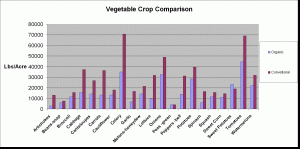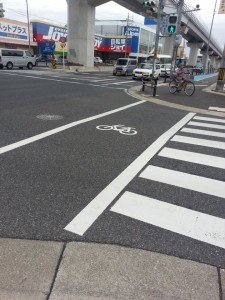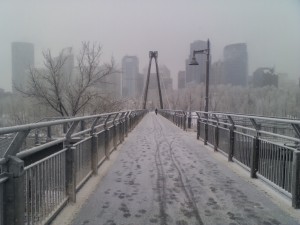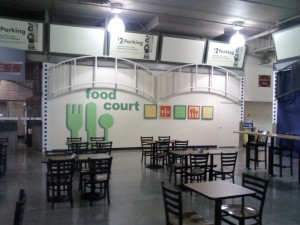There are many terms and words that are overused and abused by many in the political world. In Calgary municipal politics there is no doubt that sustainable/sustainability top the list. The definition of the word is open to broad interpretation which gives license to people to utilize the term to encapsulate and hide a broader agenda. The word is used in a way to stifle debate often as we see politicos state: “We must be sustainable”. We see virtually every report and plan coming from city hall in Calgary noting sustainability as a goal yet often never defining just what makes an issue, plan, process, industry, practice or product “sustainable”.
Today I am locked into a motel room due to some rather nasty thunderstorms making my workplan for the day unsustainable. This has provided me with some time to read and review some of the pap and reports that have been commissioned and released by our city. Rest assured, when trying to read, absorb and stomach much of these terribly expensive reports a person needs a good deal of free time without distractions. Gravol helps too.
This morning I punished myself by reading the: “CALGARY FOOD SYSTEM ASSESSMENT & ACTION PLAN”.
The terms of reference for this dog can be found here along with cost estimates but nothing solid.
The above document was produced by the “Calgary Food Committee” which was formed by “The Office of Sustainability” (yes there really is a city hall office dedicated to this). This office is modelled through the “ImagineCalgary” Which has a vague mandate of coming up with a 100 year plan for the city that will be presumably sustainable.
The above mess is tied in with “Plan it” which is a city hall division that routinely churns out reports and studies further seeking means of planning to live in a sustainable environment. The proposals of “Plan it Calgary” are routinely rejected as they simply are not fiscally viable. Despite this, the pointy heads slaving away in that department will continue to roll out more reports, plans and propositions at great expense to taxpayers.
It is outright overwhelming when one begins to dig through the City of Calgary website and sees just how many committees and groups are spawned and funded to look into and report on damn near everything. There is clearly a huge cottage industry in creating reports for the City of Calgary and while Mayor Nenshi has often spoken of streamlining City Hall, I don’t recall him trying to touch the report/study generation department. I suspect it is because that department makes for such a great employment program for old school chums who have tired of working in the barista field. While it is easy to find all these departments, reports and committees; it is damned tough finding the costs of these things (unsurprisingly).
Need, viability or even a fragment of realism are not required in generating these reports. Lack of all of the aforementioned are all present in the “Calgary Food System Assessment & Action Plan”. This thing is so horrible I am outright compelled to break it up and tear it apart piece by piece.
Let’s start with need. Is there a food sustainability crisis in Calgary by any measure that demands a huge report and insanely intrusive “action plan”? Do we see mass or even minor starvation in Calgary? Is it difficult to find sources of food in Calgary? Is food in Calgary more expensive than other jurisdictions? Are we at risk of starvation or even rationing of food within Calgary? The answer to all of the questions is a resounding NO!
Canada and Calgary within it have some of the lowest prices for consumer products (including food) as a ratio to income in the entire world. We have a vast variety of food products from the inexpensive & healthy basics to delicacies and specialty foods. We are by far a net exporter of agricultural products and are not at any risk of running out of domestically produced food. There are countless big-bag grocery stores within the city and thousands of smaller stores whether Mom & Pop shops, butchers or even large gas stations for small purchases. We have a transit system and good roadways for access to food suppliers. There simply is no food crisis in Calgary nor a looming one by any measure.
One does have to wonder what the reasoning is behind producing a large and expensive report on a non-issue is aside from employing it’s authors. In reading the entire report though it is easy to see the underlying agenda. There are an element of people who want to go back in time to the days when people lived on small farms where they often did live in food independent environments. Never mind that the life expectancies of these folks was 40 back then or that there was mass starvation on those farms as recently as the 30s due to drought. With some highly rose-colored glasses some report generating idealists have determined that this organic and independent lifestyle is attainable and desirable to most people if they simply would embrace going back in time. There is of course a general feeling of loathing of large scale and corporate agriculture throughout the report despite those things being what actually have made food affordable and plentiful to large urban populations.
Lets have a look at what that report lists as it’s goals from the imagineCalgary targets:
By 2036, Calgarians support local food production.
OK so apparently Calgarians need to be trained/convinced/mandated or something to support food production. Does this mean polling in a majority or every single Calgarian? In support does this mean participating? Will there be mandated home gardens? Mandated hours dedicated to working in collective gardens and urban ranches?
There is some polling in the report that indicates that Calgarians are generally supportive of the vague concept of local food production. Does that fill the 2036 quota or is their definition of “support” indeed something more? If that is indeed what is considered support, then what is this goal even trying to accomplish? We are already there.
The above speculations sound absurd on the surface but in reading the entire report I put little beyond these people. What I suspect would happen though is that all Calgarians would find themselves mandated through taxation to support local food production through punitive taxes added to imported foods and massive subsidies to local foods (as local/urban production is not fully sustainable).
The statement itself is as broad broad beyond reason and is a ridiculous goal for a report/action plan.
By 2036, Calgary maintains access to reliable and quality food sources.
Well that certainly does indeed sound like a nice goal. Of course I had not realized that such a threat to access actually existed. I suspect that access to food will be maintained simply due to supply and demand. Hungry people are not prone to closing roads, railways and farms. There is no exclusive access to food. We do not have people being denied food due to race or religion. Access simply is not an issue.
This statement goes a little deeper when one reads the report though. On page 90 the apparent issue is broken down.
The authors of this report feel that it is catastrophic that many Calgarians live more than 1km from a major grocery store. Keep in mind this is “major” stores such as Safeway or Superstore. Convenience stores have been categorized strangely as eating establishments and thus are not considered secure sources of food purchasing.
Now lets look at the makeup of our city. The majority of areas where one could find themselves more than 1km from a large grocery store are suburban and are middle class areas. These areas are predominantly populated by people who are mobile and have chosen to live in areas that are predominantly residential and have limited retail facilities. I bolded “chosen” because individual choice is so often ignored by city planning social engineers.
Now there are some lower income people who do not have access to a vehicle and for whom getting to a large grocery store could be more troublesome. The maps and charts in this report show where we have most of our low income people however and the vast bulk of them live in older, denser and more developed areas that have many retail options including large grocery stores. The number of people who live more than a kilometer from a large grocery store and who can’t actually get to one is microscopic. It certainly does not warrant rezoning the entire city.
Oh but wait! Zoning is exactly what is being proposed. Yes, below I will quote exactly what this report recommends to address this non-crisis of access to large food retailers:
Work with Land Use Planning and Policy to analyze the physical accessibility to grocery stores in the established areas and in the development of future policy in local area plans.
Explore potential programs and initiatives to encourage the location of food retail outlets in areas of
need. Collaboration with Family and Community Support Services, Land Use Planning and Policy, Federation of Calgary Communities and Business Revitalization Zones.
Note that with all of these calls for “collaboration” that developers and retailers are left off the list. Retailers base their locations on where they find the most demand. It is as simple as that. How does this group plan to “encourage” retailers to set up shop where business is not viable? Will the encouragement be punitive or through massive subsidies (yes us the taxpayers again)? Aside from existing districts, what will happen in new suburbs where large tracts have been zoned for large grocery retailers if no retailers want to move in? Will we force businesses to open? Will we have large city owned grocery stores? I toured the Soviet Union in the 1980s. Rest assured people, government is not who you want in charge of food production and retailing. They really are not very good at it.
Mandating a major grocery provider so that every person in the city is within a kilometer of one is simply impossible and stupid in it’s proposal.
By 2036, 100% of Calgary’s food supply derives from sources that practice sustainable food production.
The above proposal is dipping right into the realm of insanity. How intrusive would policy have to be in order to do this? They are not even saying “most”, they are proposing nothing less than 100% of our supply would be provided by sources that they determine to practice sustainable food production.
How the hell do they think they will do this? Will imported foods be banned? Will certain farms be allowed to sell to Calgary while others are not based on what this committee feels is “sustainable”?
Is this even possible under a municipal government? If not, what the hell business do these guys have in even proposing it as a goal?
Now the word “sustainable” appears 88 times in the report and is applied to damn near everything so it is tough to determine which context is in mind whenever it appears. With this crappy statement though it is expanded on later on in the document on page 110:
Environmental sustainability has been defined as the protection of air, land and water, critical for
achieving healthy ecosystems by minimising green house gas emissions, potable water use and waste
and maximising efficient use of land, air quality, water quality and biodiversity. In addition, the food
system should support community development and action taken locally to create economic
opportunities in the community on a sustainable and inclusive basis.
Quite the definition eh? So not only will these people somehow determine that 100% of Calgary’s food suppliers meet the above environmental criteria, they will somehow ensure that it is on an “inclusive” basis whatever that means.
Ahh but of course these fanatics do not stop there. On page 111 they go into a long diatribe about organic foods. You see, these people now want to expand into controlling exactly what you eat and they feel that they should somehow compel us all to eat organic food.
Now to each their own. If a person wants to pay a premium to purchase and consume organically produced food they of course have every right to. The same goes for producers. Of course I support the right of people to produce, consume and sell non-organic foods too and that is where I quickly part ways with our appointed, tax funded authors of this report.
If the goal of this food “sustainability” plan really is to ensure that healthy food is available to all at a reasonable price and with a limited footprint, then organics are the exact opposite way to go!
Let’s begin with nutritional content. Despite the perception of many, it has been outright proven that organic produce has no nutrional advantages over conventionally produced food (aside from increased protein gained through wormy organic apples).
Lets look at cost and environmental. Organic foods cost much more than conventional foods and cause a larger environmental footprint due to the much lower crop yields. In large scale farming one can’t simply pull weeds or apply a little detergent to aphids as we can in our gardens. No farmhouse will ever compost enough food scraps to fertilize a large operation. Due to this yields are consistenly lower in organic farming which in turn requires greater landuse at a greater cost to the environment and the consumer.

Personally I see it as cut and dry on the organics thing. Still though, some see it as debatable (everything is). There is simply no way that any benefits of organic food production can merit mandating that a percentage of it be a part of Calgary’s consumption despite that being an apparent goal on page 111 of the report.
By 2010, 100 % of Calgarians have access to nutritious foods.
Pure redundancy. 100% of Calgarians have access to nutritious foods already. Unless of course one wants to redefine what nutritious or access are. Get over it guys, food need not be organic in order to be nutritious. A person over 1km from a Superstore is not being denied access to food.
There are people in deep poverty who indeed have trouble getting to stores. Those are poverty issues rather than food ones however. The food bank and Meals on Wheels deal with this to some degree. There could be more work to be done on these issues but that really is not the part of a city-wide food mandate (or it sure shouldn’t be).
Some could claim that the cost alone of food is barring access for some from nutritional meals. That is simply a load of BS and this groups own report shows that.
On page 87 of the report, a piece is written on the role and successes of the Community Kitchen Program of Calgary. This is a great and proactive program that helps teach people how to shop efficiently and cost effectively. Menu planning is provided as well as direction to food specials. Now in their own statement they say: “The Community Kitchen Program can help you prepare delicious food for your family at an average cost of $1.85 per person per meal while saving you time and energy.” Yes, with effort a person can feed a family of four a healthy meal for less than $8.
We have no real food access issues in Calgary.
By 2036, sustainable urban food production increases to 5%.
Now by nature Calgary has a limited amount of urban food production. Calgary has a growing period of roughly 114 days which hugely limits the variety of foods that can be grown and the volume. Being surrounded by tens of thousands of square miles of agricultural land makes urban food production more than a little uncompetitive with major producers as a food source.
Many people garden and it is an excellent hobby. Good fresh food can be produced at home, it is nice to get outside and one can even save a few bucks. Gardening is not for everybody however. Many people simply do not have the time to plant and maintain a garden. Many people simply do not want to garden! I had to bold that because it is another one of those personal choices that social engineers despise.
This goal is where these planners start to tie themselves in knots a bit too in a few ways. While always pushing for a far denser urban environment, these people are also demanding that space be kept open for gardening whether community or personally. You simply can’t have it both ways people.
For a solution the heavy city hammer of zoning is proposed of course. Land is far too valuable (particularly in dense areas) to be set aside to grow veggies for 114 days per year. If we crunch space even further with mandated community gardens, we will an increase in property values again which of course leads to higher rents which of course leads to higher general cost of living which of course harms the low income people that these social engineers love to crow that they are protecting. Is there really a benefit in raising urban rent by say $50 per month on average so that land can be set aside to grow potatoes that for 5% of people that could have been purchased for 59 cents per pound at Safeway? These planners seem to think so.
Other means are proposed in the document. Rooftop gardens are a neat idea. They are rarely actually efficient and produce food that costs far more than simply purchasing it however. How would rooftop gardens be “encouraged”? Will owners have any say?
Now the foodie crowd wants to of course expand into further food production in suburban yards too. On page 40 of the report, it is suggested that people raise chickens, goats and bees in their yards!
I do wish I was kidding here. Anybody who has spent time near goats knows that they are terribly smelly animals that make a racket and are prone to wandering. If I wanted to live next to a yard full of chickens and goats I would move to the damn country and I suggest the same to anybody who wants to raise livestock.
On page 40 the report speaks of wool and leather being produced in urban settings too. I guess sheep and cattle in backyards are not unreasonable to these people.
How about bees? Sure honey bees are generally non aggressive and they create a great benefit in their pollination efforts. Do you really want to live next to an amateur beekeeper though? How many stings will I get when my neighbor accidentally hits his beehive with the weedwhacker? What if myself or my kids are deathly allergic to bee stings as are so many people? Who will we sue? The city or my neighbor? Either way we will all pay in the end if such idiocy comes to pass.
Concepts of supply, demand and economies of scale are totally lost on the sorts who created this report and set these goals. If indeed we hit 5% urban food production it should only be because masses of citizens chose to do so on their own accord. We can’t force these things.
By 2036, the consumption of urban and regionally produced food by Calgarians increases to 30%.
This is the final little goal here. Now they have coupled urban and “regional” to come with a number of 30%. This goes back to the concept of the “100 mile diet” that eco-types have been pushing around the world. It is quite possible if a person lives in the tropics to have such a diet. Being in Calgary however, people would soon tire of the mass wheat and canola intakes and likely would miss citrus fruits and such.
Transportation of food goods does indeed add to consumption of fuels thus making an environmental impact. This does lead to increased costs though so typically supply and demand ensures that things remain in balance between local and imported foods (until social engineers meddle with the system. Look at Ukraine last century for example).
What really gets me in this report though is that they propose and encourage the use of “bio-fuels” in transporting food in order to reduce environmental impact on page 60 and other parts of the report. Regulated minimum biofuel use actually caused food scarcity and pressured the poor in Mexico because corn was being burned as fuel rather than consumed as food!
Yes, the folks who want to feed the world are proposing that we switch to a fuel that burns food and has been proven to cause harm to the world’s hungriest and most vulnerable. Just brilliant.
To summarize, this report is nothing less than a pile of idealistic and unrealistic garbage produced in the name of some weird definition of “sustainability”. The City of Calgary blows millions on these idiotic reports and could cost us hundreds of millions if they actually tried to reach the goals of this one. The contents of the report are laughable but the cost and potential costs are unfortunately not.
“Food insecurity” is not what threatens the well being and prosperity of Calgarians. Bureaucratic and idealistic nuts who produce reports like this and the politicians who approve the intrusive legislation in applying the suggestions of these reports are a huge threat to the prosperity of us all. I know it is dull reading through these things, but Calgary voters really need to get a look at what their tax dollars are going towards and what they may be going towards in the future. This has to be reigned in and only the electorate can do it. Get up and vote to fire any city councilor who supports this trash in 2013.


























